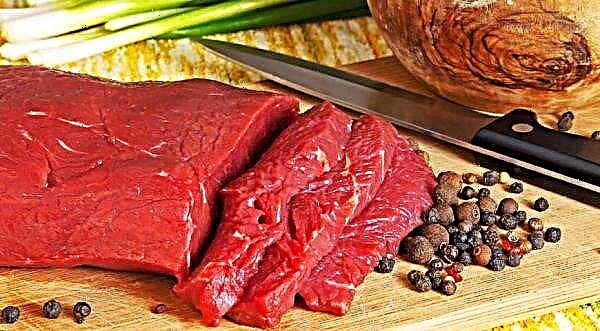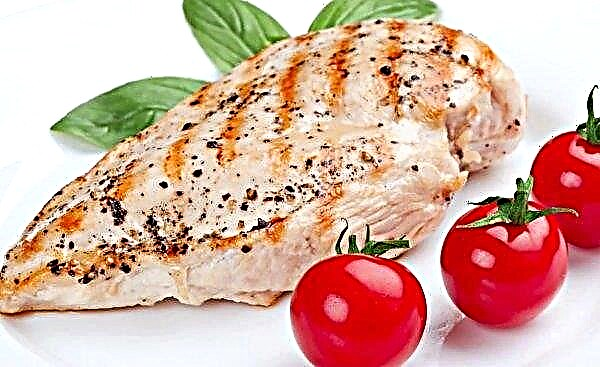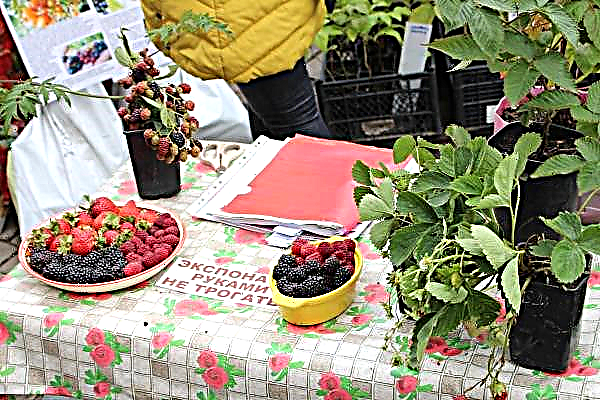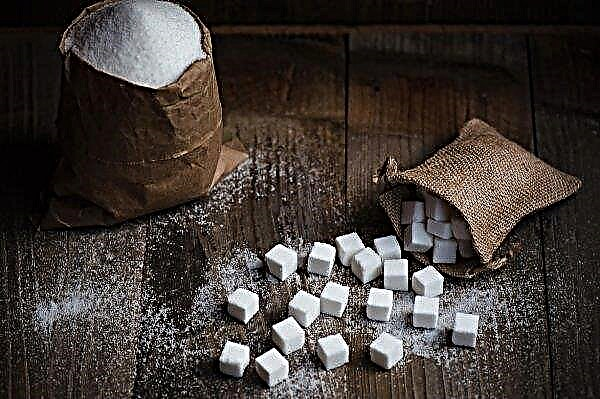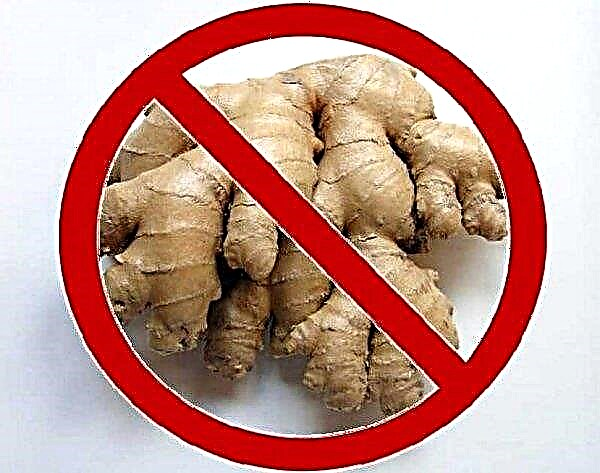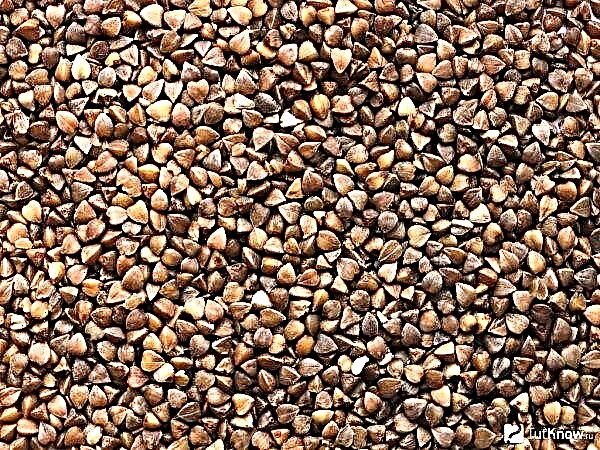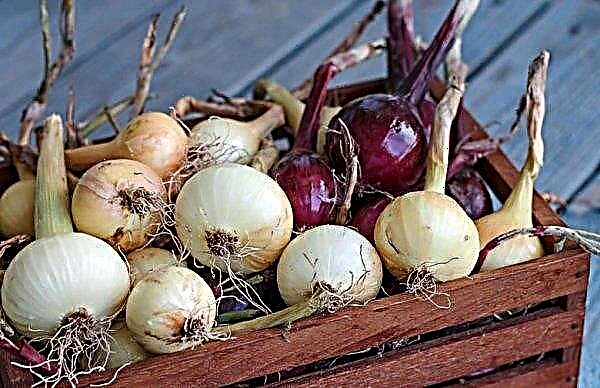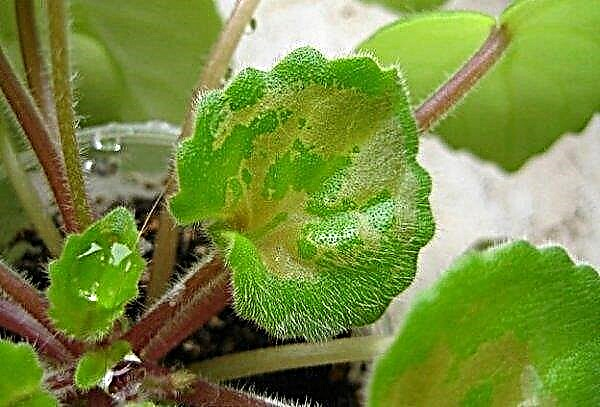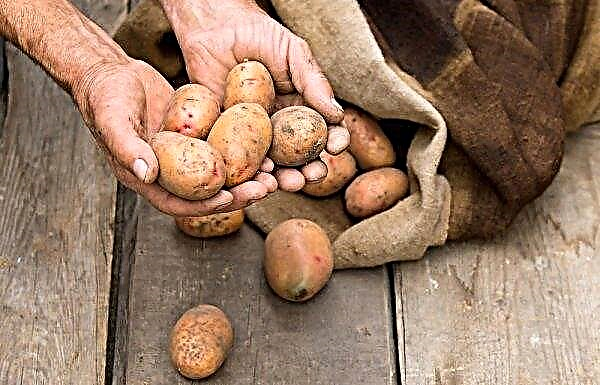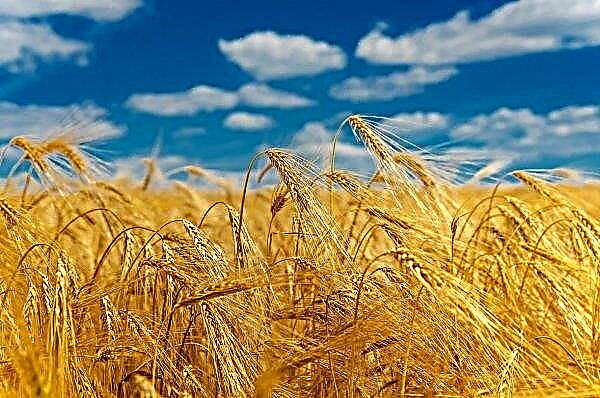Hydrangea is one of the most popular perennials in horticulture. Its various varieties have special characteristics, for example, differences in the size of peduncles and the color of inflorescences. The material of the article provides information on how to grow a crop, on caring for it, as well as on emerging diseases.
Shrub description
Among the variety of garden flowers, grassy hydrangea is characterized by long flowering. The abundance of shades of perennial attracts landscape design experts, and just amateurs who seek to emphasize the plot of the cottage, garden or courtyard. Street decoration of parks and alleys - this culture is in harmony with other plants and does not require a change in planting.

General description of the genus:
- shrub from 1 to 3 m (trees and vines also exist);
- species and varieties cultivated in Russia are deciduous;
- flowering time - from spring to autumn;
- inflorescences - panicle or scutellum;
- color of flowers - from white to blue, purple and others;
- dependence of shade on soil acidity;
- fruits - boxes;
- opposite oval leaves;
- growth in the shade or partial shade;
- all parts of the culture are poisonous.
Did you know? Hydrangeas are able to accumulate aluminum released in acidic soil, due to which blue shades of inflorescences appear.
Popular types and varieties
There are about 50 species of hydrangea, but some are worth noting. The Hydrangea family is common in China and Japan, the Kuril Islands and Sakhalin. But it is certainly cultivated in Russia. The representatives of the genus considered below are interesting from the practical side and are suitable for landing in the regions of the country.

Tree Hydrangea (Hydrangea arborescens)
This species is known as a white spherical. The English call the tree-like perennial Hills of snow - that is, "snow hills." Common forms of Hydrangea arborescens: Sterilis, Annabelle - are more popular in Europe and the USA, Hayes Starburst, Invincible Spirit, Bella Anna, and Incrediball.
The plant has the following characteristics:
- bush from 1 to 3 m in height;
- green leaves turn gray below;
- diameter of inflorescences - 10–20 cm;
- annual shoots, cut off;
- the shade of flowers changes from greenish to white or cream;
- two types of flowers - fertile and sterile (due to the abundance of the first, the inflorescence is more magnificent);
- unpretentiousness, winter hardiness and shade tolerance of the culture are excellent;
- flowering period lasts from July to late autumn.

Panicle Hydrangea (Hydrangea paniculata)
Panicle hydrangeas in Russian gardens are not only shrubs, but also multi-stemmed trees. This species is very, very decorative. Hydrangea paniculata is capable of growing up to forty years.
Here are its features:
- shoots of brown color, with time become stiff;
- leaves are oval but oblong;
- flowering is unusual: buds appear in late June, but only bloom from August to September;
- the hue of the inflorescences is greenish at first, then creamy, and in the fall pink, purple and again greenish;
- unpretentiousness and frost resistance are high.
Did you know? There are evergreen species of hydrangeas, but, alas, they are grown only in warm climates.
Such varieties are common: Grandiflora (Grandiflora, that is, "large-flowered") with inflorescences up to 30 cm, Kyushu, Preox (Praecox) and Tardiva (Tardiva). Among voluminous blooms, the following are popular: Limelight, Vanilla Frize, Magic Moonlight. The Pink Diamond or Great Star laced flowers are also particularly prominent.

Leafy hydrangea (Hydrangea macrophylla)
Under natural conditions of growth, large-leaved hydrangea is a record holder. It reaches a height of 4 m. However, the common varieties are not large, their size does not exceed 60 cm. The main differences of this species are dense leaves, shoots and inflorescences woody next season that form on the stems of last year. Hydrangea macrophylla is not cold resistant.
Another feature of this hydrangea is the varieties of inflorescences. One form (“Japanese”) is umbrella-shaped, and the second (“changeable”) is spherical. It is the culture of the latter type that is amazing in the transition of the shade of flowers from pink to blue.
Among the varieties, it is important to distinguish winter-hardy and able to bloom on the shoots of both the previous and current year. Such plants (repairing) bloom twice - in June and July-August. This Endless Summer (Endless summer), Blashing Bride, White Ball and, for example, a variety with double flowers - Expression.

Hydrangea oak (Hydrangea quercifolia)
This decorative look is not particularly winter hardy and therefore not attractive for cultivation in all regions except the southern ones. Shrub Hydrangea quercifolia grows to 1.7 m, its diameter is the same, can grow on neutral soil, but blooms in July and August, and in the middle lane may not bloom at all.Culture in landscaping space is usually used for its foliage, not inflorescences.

Ground Hydrangea (Hydrangea heteromalla)
It tolerates frosts, grows up to 3 m, decorative heteromalla, that is, ground cover, is not only inflorescences, but also decorative. True, the flowering period is not long for her - only 2-3 weeks, however, balls on the shoots are formed lush. Otherwise, this species is called Himalayan.
Important! If you pour such hydrangea with a solution of alum, then its white flowers will turn blue.
By the way, cut shoots with flowers can be used as dead wood: inflorescences are dried and kept in bouquets for a long time.

Landing
It’s easy to grow Hydrangea in open ground. You need to choose the appropriate place and implement the rules for care. Read about the choice of location and time for landing. Also below is a step-by-step instruction that describes how to plant hydrangea.
Seat selection
The location for this type of bush plant should not be exposed to direct sunlight. Penumbra is optimal. However, the proximity of trees will damage the culture - it will receive less moisture. Panicled and oak-leaved species prefer to grow in the sun, but with abundant watering they will normally develop in the shade.

Landing time
Tree varieties in the form of cuttings are planted in early April. Panicled hydrangea seedlings are planted in mature growth (five years old), also in the spring (April-May). Autumn planting is also possible, but the plant may not survive too cold winters, so spring should be used for better rooting.
Soil preparation
There are clear rules for the preparation of the planting pit and soil mixture:
- the depth and width of the recess for planting is 60/50 cm (of course, the dimensions depend on the volume of the roots);
- the distance between seedlings - from 150 cm (visually it will decrease as the shrubs grow);
- soil components: 1 peat, 1 sand, and 2 each of land and humus;
- adding fertilizers (20 g of urea, the same amount of potassium sulfide, 60 g of superphosphate, mix in 10 kg of humus and add to the main mixture).

Landing pattern
Planting instruction is as follows:
- Pour some of the soil into the bottom of the pit.
- Plant a seedling there, spreading the roots.
- At this point, it is useful to shed the root system.
- Fill the recess and the underground part of the culture with soil so that the root neck remains at the level of the soil.
- Then water the ground under the bush.
- Mulch the surface (with straw, sawdust or bark).

How to care
Features of the species of the described plant are common - they are in the following basic features:
- hydrophilia;
- exactingness to heat;
- unique attitude to the composition of the soil;
- relatively low frost resistance.
Based on this list, it is necessary to take into account the rules of watering and feeding, as well as maintaining the state of the topsoil and the shape of the bush. Taking care of in preparation for wintering is also important.
Video: Care, planting, pruning hydrangea
Watering
Irrigation should be regular, monthly with normal rainfall. At first - 30 liters of water are added every seven days. In order not to make a mistake with watering, you need to monitor the soil moisture - it should not dry out from above. Mulching promotes stability in the amount of soil moisture. It is also useful to spray the bushes.
The introduction of water to early varieties is reduced from August and then stops, and later - from September. In the autumn, the buds mature, so a little spraying should be done.

Top dressing
The nutrient mixture described above and introduced into the planting soil is again given to the shrubs after two years. And before this plant is better not to disturb.
The remaining soil fertilizer rules are as follows:
- in early spring complex mixtures with phosphorus, potassium and nitrogen are introduced;
- when the buds begin to appearsuperphosphate formulations and those containing potassium sulfate are added;
- it’s useful to introduce manure with active flowering (enough two times per period).
Important! Do not overdo it with nitrogen fertilizers that give a green tint to the inflorescences. Such mixtures harm the normal wintering of hydrangea.
Mulching and loosening of soil
Mulch is useful and important. It helps maintain moisture.. The natural conditions of any soil is the presence of last year's foliage or other organic material. Therefore, in forests and open grassy meadows, the earth is always loose, fertile, saturated with oxygen. Mulching mimics such conditions.

Hydrangea prefers peat or compost, but other compounds will do. (sawdust is also used for decorative decoration of space in the design of plots). It is useful to add mulch at the beginning of summer, and then before winter - which will help to survive the frost.
Important! Mulch is very important: the first years it is necessary to cover it with soil in spring and autumn so that hydrangea roots are not exposed.
Plant pruning
The formation of a decorative look is performed as follows: after a sanitary haircut, all shoots are collected and shortened by half the length.

Correct pruning can be done by following these rules:
- time - early spring (wilted parts lie on the bud of a bush and protect it during the winter), although hydrangea is often cut in the fall;
- degree of truncation - to the first or second pair of kidneys;
- pruning depth gives a larger size of inflorescences (and the more shoots there are, the smaller the size of the flower part);
- annually not only such truncation is performed, but also preventive (damaged parts are removed);
- removal of all old branches - rejuvenation - is carried out every 3 years;
- cutting to the root - updating the bush (every five years they cut to 15 cm above the ground).
Important! You can not trim the annual hydrangea.
Winter preparations
It is possible to cover hydrangea under the winter with foliage of healthy trees, straw or special coatings made from convenient materials. First of all, young plants and those varieties that do not differ in frost resistance are worth saving and protecting.
If the latter are already mature bushes, then their it is recommended to carefully cover from above with the help of some structure (frame to which non-woven material such as spunbond will be attached). And under it, it is useful to fill the empty seats with foliage or straw.

Breeding
In addition to the vegetative methods of hydrangea cultivation, it can be distributed by seeds. In addition to cuttings and the use of layering, there is also a way to divide the bush. The latter is performed both in spring and autumn. The dug plant is divided into several parts, while a separate part must contain a renewal bud. Next, each new small bush is placed in a pre-prepared depression.
Did you know? The species of large-leaved hydrangea has more than 600 varieties.
Seeds
The seed method is rare because it is troublesome. Growing seeds is carried out at home. In February, planting material is placed in a container with earth (with peat and sand) and lightly sprinkled. Further, it is important to carry out frequent watering and fertilizing. Keep the future seedlings better covered with a film. After the appearance of the first two leaves, hydrangea is dived. When it grows to 7 cm, each plant needs to be planted separately. On the street - in the open ground, you can plant a culture only after a year in the spring. Before this, you can transfer the seedlings to the greenhouse.
Cuttings
Propagation by Cherenkov recommended starting in mid spring or early summer. One-year lateral stems about 10 cm long are used. Cuttings cut at an angle of 90 ° are placed in the soil (earth, sand and peat). The distance between them is 5 cm. The roots sprout within a month. Material for further transplantation is ready.
Layering
Layering - This is the shoots of the first year, which must be bent to the surface of the soil and buried. Part of the stem of 20 cm should remain above the ground. After a year, complete rooting will take place, then it will be possible to separate the resulting independent plant from the mother. You can perform this method of reproduction both in spring and autumn. This method is simple and convenient. It gives a 100% guarantee on a positive result.
Diseases, pests and their control
Among the diseases characteristic of hydrangea are downy mildew and chlorosis.
The first disease affects the leaves and stems. Symptoms: oily spots that increase and turn yellow over time. The appearance of this is associated with low temperatures and high humidity. You can fight like this:
- Take 150 g of soap and 15 g of copper sulfate.
- Dilute them in 10 liters of water.
- Spill the plant completely, applying the solution to the leaves and shoots.
Did you know? If the large-leaved type of hydrangea is contained in an alkaline soil, then the inflorescences will turn red, purple or pink.
Chlorosis manifested in the form of brightened leaves. As a rule, excessive liming of the soil or a large amount of humus in it leads to such a disease. You can overcome the defeat of hydrangea by the method of two or three times watering with a specially made solution: 40 g of potassium nitrate is used in 10 l of water. Then you need to shed with diluted iron sulfate (in the same proportion).

And pests of culture are spider mites and aphids. The first damage the leaves from below. These parts of the plant turn yellow, dry and fall off. Tick active during hot and dry summers. Spraying "Theophos" is used against an insect (6 g per 10 l of water). Green aphids, which comprehend greenhouse hydrangeas, are fought with anabazine sulfate. 15–20 g of the substance are dissolved in water in a 10-liter bucket. The resulting product is twice watered shrubs.
Many types of beautiful bushes with large multi-colored (even on the same plant - for example, in the large-leafed Magenta) inflorescences are represented by amazing varieties. Some of them can be easily grown in central Russia, in the Urals and, of course, in the southern part. There are winter-hardy forms that require warming only at a young age. The beauty of hydrangea lies in the size of its bushes, and in the shades of the petals. There are unique representatives, for example, Vanilla Frize, whose inflorescences are colored - white above, pink below. There are also surprising in saturation, like the Blue Lagoon or Wims Red.


